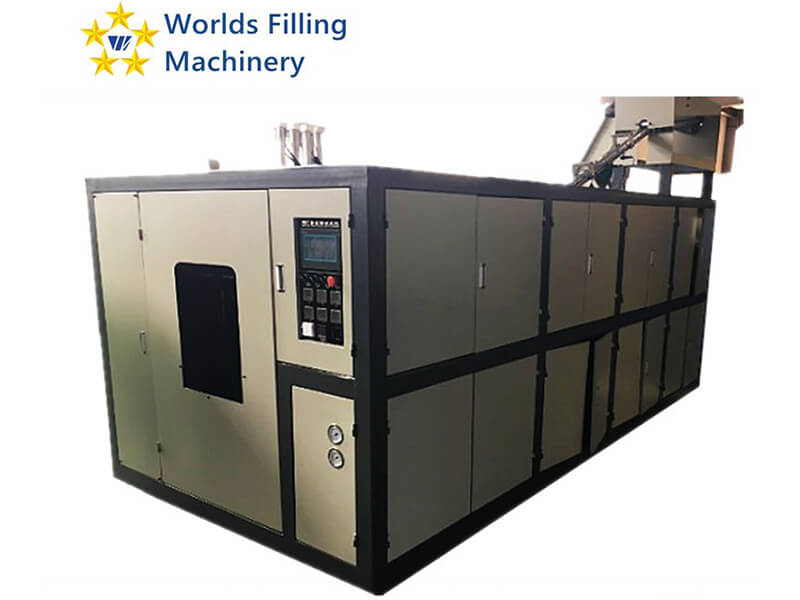Welcoming distributors and end-users around the world to cooperate with us, we are looking forward to cooperating and getting win-win situation with home and abroad customers.
The bottle blowing machine is convenient and fast, and has a large amount of molding. After its appearance, it replaced most of the manual blowing machines and was adopted by most beverage companies. Next, the editor will tell you about the structure and working principle of the automatic blow molding machine for your reference!

1. Clamping part
The positioning rack is balanced and positioned, the front, middle and rear three templates, the double crank arm connecting rod mechanism and the mold clamping cylinder are driven by the electromagnetic directional control valve to drive the cylinder to drive the connecting rod crank arm to realize the opening and closing of the mold. The structure has reasonable design, stable operation and large clamping force.
2. Stretching and blowing part
It consists of a stretching solenoid valve, a high-pressure air blowing valve, a pulling body sealing cylinder, a movable sealing seat, and a blowing air storage cylinder. When working, push the stretching cylinder piston through the directional control valve, drive the stretching rod and the sealing cylinder to push up on the preform that has been clamped, the sealing cylinder seals the preform mouth, and the stretching rod is elastic for the heated preform. At the same time, the gas stored in the gas storage cylinder is subjected to bottom blowing and high-pressure inflation molding by the high-pressure blowing valve through the sealing cylinder.
3. The heating chain plate passes through the first station of the stepping cylinder, and is detected and positioned by the photoelectric switch, and then blown into the product by the molding mechanism.
4. The rotation chain is driven by the motor to work continuously, so that the preforms in the drying tunnel are quickly and evenly heated.
5. The preforms are conveyed and sorted through the feeding system, and the preforms are installed on the blow molding machine base by the preform conveying manipulator, and then enter the drying tunnel.
6. The heating consists of two sets of relatively independent far-infrared lamp tube ovens. Each far-infrared lamp tube of each group of ovens can be adjusted longitudinally and backwards according to different preforms.
7. The preform is heated. While the preform rotates to make it evenly heated, the mouth of the bottle is cooled, and then the fan blows hot air to the preform, so that the inner and outer walls of the preform are heated evenly.
8. After the preform enters the blowing mold, the pre-blown air enters to stretch the blown preform in a circumferential direction; when the stretching rod reaches the bottom of the mold, the high-pressure gas enters the mold cavity to further stretch the preform, making the bottle wall tight. Stick mold.
9. The high pressure gas is kept in the mold for a certain time, on the one hand, the internal pressure caused by the stretching of the preform is eliminated. On the other hand, the bottle wall is close to the mold wall to improve the crystallinity of the bottle body plastic.
10. After the high-pressure gas is finished, the exhaust and mold release are started.
11. The blowing process is over.
12. The bottle is sent to the lowering station through the chain plate, and is pulled up by the lowering cylinder, and then blown out by the air flow.